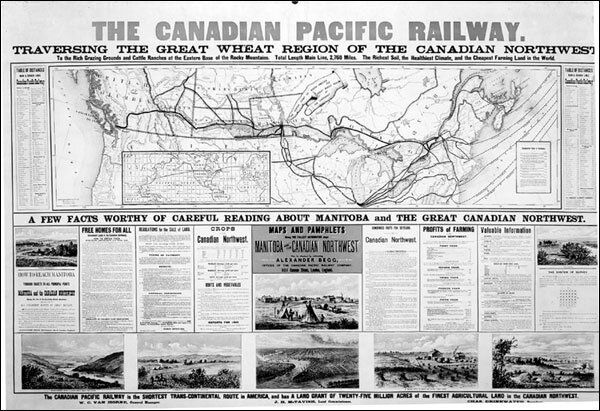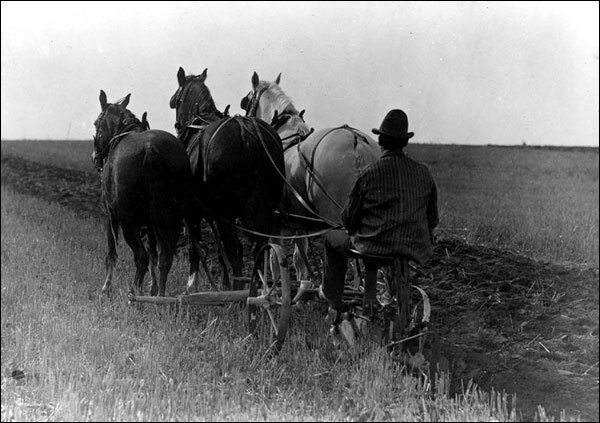Introduction: The Growth of the Force
An inspection in the field.
The North West Rebellion was a turning point for us. Our good name had been muddied by the likes of General Middleton. We had lost the respect of many of our Indigenous friends.
We numbered over 1000 officers and men, but many were untrained new recruits and some of our best officers had retired. We had challenges ahead!
The Government and the Canadian Pacific Railway encouraged settlement of the west.
The West was changing as well. When we first arrived, hardly any white people were here: traders, a few missionaries and priests, the Boundary Commission, and a handful of explorers. Now we had settlements, even towns, at places like Swift Current, Calgary, Regina, Prince Albert and Edmonton. People were homesteading and farming. The West was becoming downright civilized!
Did you know that the NWMP was established as a temporary force? We were supposed to do our work, then after a few years, disband and go back to our old homes and jobs.
The prairie soils were some of the best in the world for growing grain.
But with all these new people arriving, our job changed. Not everyone who came out west was a fine, upstanding citizen. We had our fair share of thieves, murderers, swindlers and other unsavoury characters. The government hoped that the settlers and towns would develop, and pay for, their own policing. What it forgot was that the settlers were busy enough building their houses and barns, breaking land, seeding and harvesting, and just surviving. So, we stayed.
Little did we know at the time, that in a few years we would trade our horses for dog teams, the prairies for the Arctic, and be some of the first men to volunteer for action in the South Africa War and the First World War.



